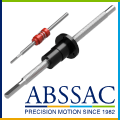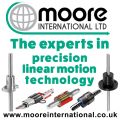
Posted to News on 16th Jan 2008, 12:09
Five trends for ATE engineers to watch in 2008
National Instruments believes that five trends will emerge in 2008 to help test engineers deliver more complex designs in less time and at lower cost.
Test engineers in industries ranging from aerospace and defence to consumer electronics are facing the challenge of testing increasingly complicated designs with shrinking timelines and budgets. To address these issues, engineers are employing new test and measurement technologies that are capable of meeting complex design requirements without raising costs. National Instruments, a worldwide leader in automated testing, has identified five trends that it anticipates will significantly influence the test and measurement industry over the next three years.
Eric Starkloff, National Instruments' Director of Test Product Marketing, states: "Companies are turning to the latest technologies including PXI, FPGAs and multicore processors to develop high-performance test systems that can meet consumer demand for higher-quality products. Fortunately, more technology vendors are developing industry-standard tools capable of solving problems that previously depended on expensive, dedicated test systems."
1. Increased use of multicore/parallel test systems
To continue realising performance gains without increased clock rates, processor manufacturers are developing processors with multiple cores on a single chip. With multicore processors, test engineers can develop automated test applications capable of achieving the highest possible throughput thanks to parallel processing. Engineers traditionally had to learn complex constructs such threading libraries and mutexs to achieve parallel programming in a text-based programming language. However, using graphical data flow programming software such as NI LabVIEW, engineers immediately benefit from multicore processors because the language is inherently parallel and can automatically scale user applications based on the total available number of cores.
2. Growth of software-defined instrumentation
One issue facing test engineers is that test instrumentation is not updated as rapidly as the devices being tested. The functionality of these complex devices is being defined by the software embedded in them, such as most smartphones, which gives design engineers the ability to add features faster than ever before. This is increasingly challenging for many test engineers because standalone instruments often lack the measurement capabilities of the most recent standards due to the fixed user interface and firmware that must be developed and embedded in them. Test engineers are therefore turning to a software-defined approach to instrumentation, which gives them the ability to quickly customise their equipment and user interfaces to meet specific application needs and integrate testing directly into the design process, thereby further reducing development time. PXI is an example of a widely used software-defined instrumentation standard for building modular, reconfigurable high-performance automated test systems.
Kiran Unni, Frost & Sullivan's Measurement and Instrumentation Research Manager, comments: "The adoption of tools such as PXI is an indicator that companies recognise the benefits of moving toward software-defined instruments. The savings being realised in capital equipment, system development and improvements in system efficiency all contribute to reducing the per-unit cost of test, directly influencing the bottom line."
3. Growing popularity of FPGA-enabled instrumentation
Another area experiencing rapid expansion in the test industry is the increase in system-level tools for field-programmable gate arrays (FPGAs). More manufacturers are including FPGAs on modular instruments and giving engineers the access in software to reprogram them according to their requirements. For example, test engineers can embed a custom algorithm into the device to perform in-line processing inside the FPGA or emulate part of the system that requires a real-time response. New system-level tools are emerging that provide engineers with the ability to rapidly configure FPGAs without writing low-level VHDL code. LabVIEW, for example, can target onboard FPGAs and synthesise the necessary hardware directly from a graphical LabVIEW program, dramatically reducing the complexity of the code development. As electronic devices become more complex, test will become more integrated in the design process and user-defined measurements will become even more important.
4. The explosion of wireless standards
Test engineers are facing new challenges as the use of RF and wireless applications is expanding. RF and wireless traditionally have been very specialised fields, but the industry is experiencing a trend in which wireless capability is being integrated into more products. Soon, RF instrumentation could become as ubiquitous as general-purpose instruments such as digital multimeters. This growth in adoption requires test engineers to learn wireless protocols and keep pace with the rapid introduction of new standards. This trend was reflected in the 2007 Test and Measurement World Salary Survey, in which subscribers across engineering disciplines were asked to identify the top technologies they are being required to learn. Among the top responses were WLAN and WiMax. A critical part of keeping up with these new technologies is a test platform that engineers can rapidly reconfigure to test any wireless standard.
5. Emulation-based ATE that improves system-on-a-chip and system-in-a-package testing
As semiconductor devices become more complex, the process of testing each part completely with a traditional vector-based methodology is increasingly difficult. Complex systems-on-a-chip (SoCs) and systems-in-a-package (SiPs) require a system-level functional test more closely related to testing components placed on a printed circuit board than a typical chip test, but they still require the high speeds demanded in production test for the semiconductor industry. The strategy of testing a device by emulating actual real-world signals provides a better method of functional testing these types of high-speed systems. This emulation-based ATE (also termed protocol-aware ATE at the International Test Conference in Santa Clara, California, in October 2007), combines FPGA-based hardware to offer real-time responses and real-world interfacing with the standard pin electronics found in traditional ATE. This lowers the total cost of test through better use-case coverage and improves the user's ability to debug failures.
Use the form on this page to request a callback or more information about NI products and services.
National Instruments Corporation (UK) Ltd
Measurement House, Newbury Business Park
London Road
RG14 2PZ
UNITED KINGDOM
+44 (0)1635 523545

































